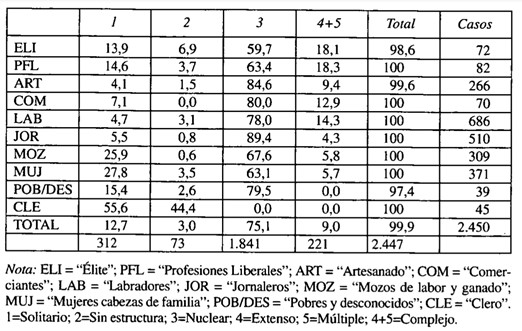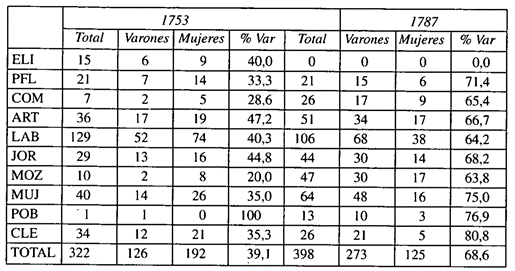
The transmission of property is fundamental to explain the material perpetuation of families. In most cases, children were designated as heirs, although in their absence, the property was passed on to other members of the family. Of the cases studied for the Sierra de Alcaraz, in the province of Albacete, in the 18th century almost 85% of the inheritances were destined to children, followed by spouses (9%), siblings (6.9%), grandchildren (4.6%) and nephews and nieces (3.3%). The data provided by the Sierra de Alcaraz follow the practices of the egalitarian model of the Castilian inheritance system; a descending level of transmission and with relative equivalences between men and women (53.76% and 46.24% respectively). In terms of matrimonial status, in the transmission of assets, an attempt was made to put unmarried children on an equal footing with gifted children if they had married, so that the eldest son did not benefit more than the others as a general rule. On the contrary, younger children could be given advantages because they had not yet left the family nucleus and were able to help with the work or assist the testators when they were ill. If the children were young, the spouses were appointed curators and usufructuaries or, in their absence, the closest relatives.
Collection: Statistics
Project: 3. Rural world and urban world in the formation of the European identity., 4. Family, daily life and social inequality in Europe.
Chronology: XVIII
Scope: Secondary Education, Baccalaureate, University
Resource type: Statistics
Format: Table
Source: García González, F. (2000). Las estrategias de la diferencia. Familia y reproducción social en la Sierra. (Alcaraz, siglo XVIII). Madrid: Ministerio de Agricultura, Pesca y Alimentación, p. 173.
Language: Spanish
Date: 2000
Owner: Pablo Ballesta Fernández (Modernalia)
Copyright: ©Ministerio de Agricultura, Pesca y Alimentación ©Francisco García González ©Seminario de Historia Social de la Población
Abstract: The transmission of wealth through inheritance according to kinship and sentimental affinities. The Castilian model of egalitarian inheritance prevailed, and the most common heirs were the first-born.
Image
Tags








